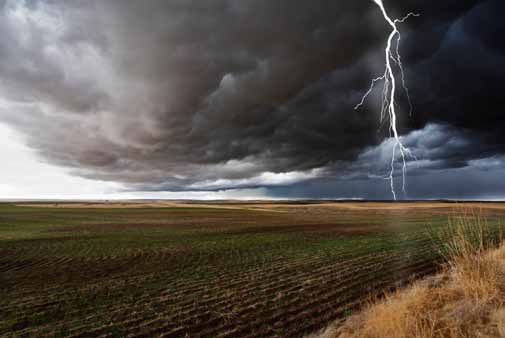By Chris French
The first few months of every year seem to encourage stepping back to reflect upon the opportunities and changes that the last year brought. This time of reflection helps us put into context those changes and what they might mean moving forward.
For the stormwater sector, 2016 and early 2017 offered many changes in regulations. These changes will have a lasting effect in how the sector implements its work to protect and improve the water environment.
Some of these changes occurred at the national level; others occurred within the states (but have potential effects beyond the states in which they occurred).
This brief analysis recaps some of the most notable regulatory updates and provides the context of what they could mean for the future.
EPA Administrator signs final Phase II Municipal Separate Storm Sewer System (MS4) permit remand rule
Previous U.S. Environmental Protection Agency (EPA) Administrator Gina McCarthy signed the final Municipal Separate Storm Sewer System (MS4) General Permit Remand Rule on Nov. 17, 2016. The issuance of this rule satisfies a court remand by the U.S. Court of Appeals for the Ninth Circuit in Environmental Defense Center v. EPA, which required that a final rule addressing its remand be issued by no later than November 17.
The proposed rule is the result of a September 2015 settlement approved by the Ninth Circuit U.S. Court of Appeals with the Natural Resources Defense Council (NRDC) and the Environmental Defense Center Inc. That settlement required EPA to revise its MS4 Phase II permits, which affects small communities with populations below 100,000.
EPA requested public comments regarding three potential options for how the MS4 Phase II program might be implemented. Ultimately, EPA selected Option 3, which allows states and territories to choose the approach that they deem best suits their individual needs.
This is the approach that many organizations championed in their public comments. The Rule also includes many provisions that allow for greater public engagement and review of general permit documents such as Stormwater Management Plans and Stormwater Pollution Prevention Plans (SWPPPs).
2017 EPA Construction Stormwater General Permit
Just last month, EPA issued the final Construction Stormwater General Permit. The permit includes a number of updates and proposals that EPA specifically requested public feedback on. Most notable are requirements that allows for the optional allowance of group Stormwater Pollution Prevention Plans (SWPPPs) where responsibility for permit compliance will no longer reside with the property owner but is shared among a group of contractors and the owner(s).
The proposed permit is only immediately applicable to jurisdictions and tribal groups who do not run their own programs and have designated authority granted by EPA. However, it is expected that elements of the updated permit will be mimicked in many construction stormwater general permit programs administered by U.S. states and territories.
Rain barrels now legal in Colorado, but have limited use
On May 12, 2016, Colorado Governor John Hickenlooper signed a new law that permits the limited use of rain barrels for rainwater harvesting. Colorado previously was the only state to forbid the use of rain barrels. Their use was viewed as conflicting with the state’s water law doctrine of “prior appropriation.” The view was that widespread use of rainwater harvesting at any scale would restrict water flows and affect water rights of downstream users. As a result, Colorado became the only state in the country where rainwater harvesting was considered illegal.
The new law allows for a total of two rain barrels with a maximum storage capacity of 110 gallons for residential properties and/or multi-family residences, excluding businesses and other private sector entities. The law does not allow the use of larger rainwater harvesting systems. The law also includes a statement that rain barrel use is not considered a water right and is not intended to encroach upon the prior appropriation doctrine.
The signed bill became effective on Aug. 10, 2016.
Many interest groups will certainly be following this ongoing matter over the upcoming years in order to determine if there might be additional opportunities to expand rainwater harvesting beyond two rain barrels.
Controversial stormwater bill becomes law in Tennessee without governor’s signature
A contentious stormwater bill (S.B. 1830/H.B. 1892) that restricts the ability of localities to establish post-construction control standards became law in Tennessee without action by Governor Bill Haslam (R).
The measure took effect April 22, 2016, but without signature of Gov. Haslam. Tennessee state laws allow for bills take effect 10 days after they are sent to the governor if no action is taken on them.
In a unique response, Haslam issued a letter to the both the Tennessee lieutenant governor and speaker of the house explaining his actions. He stated that he took no action due to concerns about the bill’s confusing language, potential negative effects to localities and water quality and the possibility of litigation.
The new law effectively changes the previously proposed “1-inch rule” for the forthcoming MS4 general permit. This rule mandated that up to 1 in. of rainfall must be absorbed within a new development property without any resulting runoff. The new legislation, however, stated that, “No general permit shall impose requirements that are more restrictive than the Federal Water Pollution Control Act…”
Shortly after the new law was passed, the Tennessee Department of Environment & Conservation issued the final NPDES General Permit for Discharges from Small MS4s for public notice. Language in the permit was modified to reflect a 1-in. water quality treatment volume (WQTV) standard as opposed to the originally proposed 1-in. runoff volume reduction standard.
As the federal standard for stormwater refers to installing stormwater practices to the “maximum extent probable” (MEP), some municipalities have interpreted the new legislation to allow for the original proposed requirement of 1 inch “runoff reduction.” How the MS4 general permit will be implemented over the upcoming years to account for the new legislation will continue to be a topic of interest within the stormwater sector.
Building on the past
Stormwater continues to be a moving target in the U.S. Absent a national rule that provides uniformity in the way stormwater programs are administered and implemented, we will continue to see a diverse sector that reflects the unique characteristics of the states and territories.
The diverse interests of those involved in the stormwater sector continue to require agility and flexibility to navigate the diversity of national and state stormwater regulations and permit programs. This is a trend that is most certain to continue into 2017 and beyond.
Chris French is director of the WEF Stormwater Institute.
This article has been excerpted from a longer, more in-depth discussion that appears in the Spring 2017 issue of World Water: Stormwater Management.





